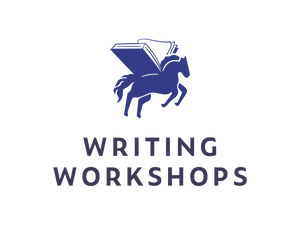by Writing Workshops Staff
A year ago

The word alchemy conjures a medieval sorcerer turning a lump of lead into gold, albeit usually failing in the process. More successful accounts of using the mind to transmute matter—bringing a corpse back from the dead, extracting a sword from stone—are reserved for religious texts and fantasy novels. In ordinary human affairs, including most current literature, modernity demands we be both materialists and realists.
Still, for authors, alchemy remains a powerful tool, in two respects. First as metaphor. How else to describe your hapless main character overcoming seemingly impossible odds except by their acquisition of a new superpower? Before that can happen, a protagonist must undergo a descent into the underworld, where he or she is tested and pushed to a breaking point. Once broken, meaning transformed, a male hero is hailed as herculean. A triumphant heroine becomes a goddess. It’s the equal opportunity old saw: whatever doesn’t kill you, makes you stronger.
Of course, in real life, things don’t always work out that way. We can spend decades defeated by traumatic events that occurred early in our lives. Perhaps never recover. But here, writers have an advantage—if they choose to use storytelling as a form of alchemy with the intention of healing the kind of psychic wounds that can haunt us all our lives.
The ancients were all over this. Pagan storytellers like the Druids, Greeks, and Egyptians told and retold stories meant to inspire and imprint codes for overcoming human frailties in the hearts and minds of their peoples. In effect, they used story as an agent of healing. As if the magical transformations of matter and energy depicted in these tales were well within their listener or reader’s grasp.
In our own time, the fields of narrative medicine and somatic psychotherapy demonstrate how the sharing of trauma in the form of story can be an effective part of a patient’s emotional, even physical healing. Testimony and evidence of such transformations abound in recent bestselling books like The Body Keeps Score and What Happened to You.
In my experience as an author of memoir and autobiographical fiction, and as a writing teacher specializing in autofiction, I’ve seen the healing of trauma supercharged when a factual account of an early traumatic experience is combined with fictional elements. That is, when we change the story of what happened to us.
My sense is that the healing takes place precisely in this gap between truth and fiction. As if the creative energy of reimagining one’s trauma, then, importantly, sharing it with others, signals a biochemical change that influences the writer’s current thoughts and behavior. Some suggest the transformation occurs on a cellular level, which is then mirrored in the body and behavior. Call it the imprinting of a new code, the plasticity of the human brain, or the power of prayer. I won’t speculate any further about how and why it works. But I’ve seen enough to know it does.
The guiding question writers creating a work of autofiction must ask themselves to pursue this healing path is What if?
- What if I write a story with a different response to the trauma that blew up my childhood? What if I imagine confronting the perpetrator of the violence that wounded me? In one of my recent workshops, a memoirist in his eighties wrote such a scene, elaborating on a childhood memory of wishing he could so just that.
- What if I permit myself to deeply mourn the loss of my parent, sibling, or child (either born or unborn)? Another writer I work with gave her aborted child an omniscient point of view on her life, and that of her family, past and present.
- What if I go back two or three generations and recreate, even change, the nature of the tragedy that made my ancestors who they were? What if I allow for the strengths they developed, like the will to survive, as well as the physical and mental illnesses they may have epigenetically passed on to me and my children? One client of mine, a descendant of a family lineage devastated by the Armenian genocide, entered the consciousness of a grandmother she never knew to write the story of how this woman’s grief and survivor’s guilt drove her to desert her young daughters and spend the rest of her life in a mental institution. That account gave her a portal through which to enter and reimagine her own emotional challenges.
To write a compelling work of autofiction, whether a short story or a novel, these ideas, essentially elements of theory, must be translated into craft.
That’s exactly what I try to do my upcoming autofiction classes at WritingWorkshops.com:
When Memoir Becomes Autofiction 6-week workshop beginning September 8th, 2025.
Intermediate Autofiction: Nail Your Protagonist To Find Your Plot 12-Week Zoom Workshop with Victoria Costello starts Wednesday, October 22, 2025
Advanced Autofiction 12-month Workshop and Mentorship starting April 1st, 2026
Instructor Victoria Costello is an Emmy Award-winning writer, teacher, and the author of six published non-fiction books, including her memoir, A Lethal Inheritance, and her debut novel of autobiographical fiction, Orchid Child (June 2023).
